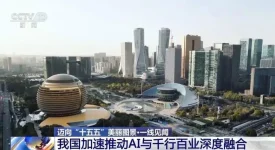Nvidia market share in AI GPUs in China plummeted from 95% to 0% in recent years, as admitted by their CEO Jensen Huang, due to the restrictions placed on the export of its top-tier AI chips to China.
Even in the wake of the recent truce agreed by the US and China over tariffs and rare earth minerals, Trump has already signalled that the top AI chips produced in the US by Nvidia will not be exported to the Chinese market, in a continuation of its protectionist strategy that makes little sense.
Interestingly, Singapore makes up 22% of Nvidia’s sales of AI chips, having risen 95% since the Chinese export controls and some analysts believe it is being used as a possible unofficial backdoor into the Chinese market. Singapore is where the invoice for the chips is made, yet only 1% of these AI GPUs actually get delivered to Singapore.
China has technically banned many local firms from purchasing Nvidia chips, focusing their efforts to create their own chips in order not to rely on Nvidia, the major player in US technology markets.
Nvidia Corp. became the first company to have a market value of $5 trillion this week, a massive valuation that is driving nearly the whole of the US stock market gains. Currently Nvidia’s stock price is worth 16% of the US’s GDP, making it a massive part of the US’s economic growth. But does this continued market share issue pose growth problems for Nvidia and the US?

If China succeeds in a few years in replicating Nvidia’s success with GPU development, it’s very likely that China will reduce Nvidia’s market share worldwide, just like they’ve overtaken American competition with electric cars.
In Europe, Chinese electric car maker BYD is managing extreme levels of growth, sales are up 400%, meanwhile Tesla, America’s pioneering electric car maker, is losing market share to the extreme, with sales down 90% in Europe. Will the GPU market follow in the same way that the electric car market has?
There is some disagreement whether China can catch up in GPU technology, but logically speaking, China has every chance to catch up and even overtake Western companies. China’s long term strategy is coming to fruition every year, whilst short term strategies in the West look to falter.
Nvidia’s stock price has risen tremendously over the last few years, due to speculation that it is the sole player for providing GPUs for the burgeoning AI market. But many fear the AI market is a huge bubble waiting to burst. Nvidia GPU sales in China were worth 17% of its revenue before the export restrictions, and that’s a large chunk of their revenue to lose.
Nvidia believes that they are 10 years ahead of their Chinese competition, but if they hit a ceiling in development, then China likely catch up more quickly.
Commenters on the issue:
“I keep seeing AI bubble everywhere now. The reality is it will probably defy all logic and continue to double in size for the next year or two, causing the sentiment to shift from bubble to FOMO wiping trillions dollars off the market.”
“Soon China’s AI chips will dominate the market. Poor NVDA.”
“China’s EUV machine is entering trial production right now. Give it a few years to iron things out, another few years for manufacturing and installation and in 5 to 7 years China will basically start producing cutting-edge chips en masse.”
“Isn’t it weird how these chips are restricted by Trump because they might be used by the military but he is furious he faces restrictions on rare earth minerals that he needs for the military?”
“This will age like milk, and we’ll have a bunch of abandoned data centres in the US. If not and the US data centres and manufacturers thrive, I suspect the world will have much bigger problems.”
“People are going to lose so much money on AI related things when the bubble bursts.”
“Good. Nvidia needs some good old fashioned competitive market pressure to start bringing its prices back to reality.”








